To obtain the highest quality image in computer games, it is necessary to use anti-aliasing. But when you turn it on, performance drops significantly, since the load on the video card increases by 20-80% (depending on the set sampling level). It makes no sense to enable anti-aliasing only at ultra-high resolutions, like 4K, since it is impossible to visually notice the difference. AMD’s ultra-high resolution rendering technology allows you to get an image “without ladders”, but without using a 4K monitor.

What is AMD Ultra High Resolution
Previously, video cards, when starting the game, rendered the image in the resolution set by the user by default. For example, if the monitor only supports Full HD, then in the settings of the graphics accelerator it was possible to set only 1920 by 1080. And in this situation, anti-aliasing really needs to be turned on in order to improve the final picture quality.
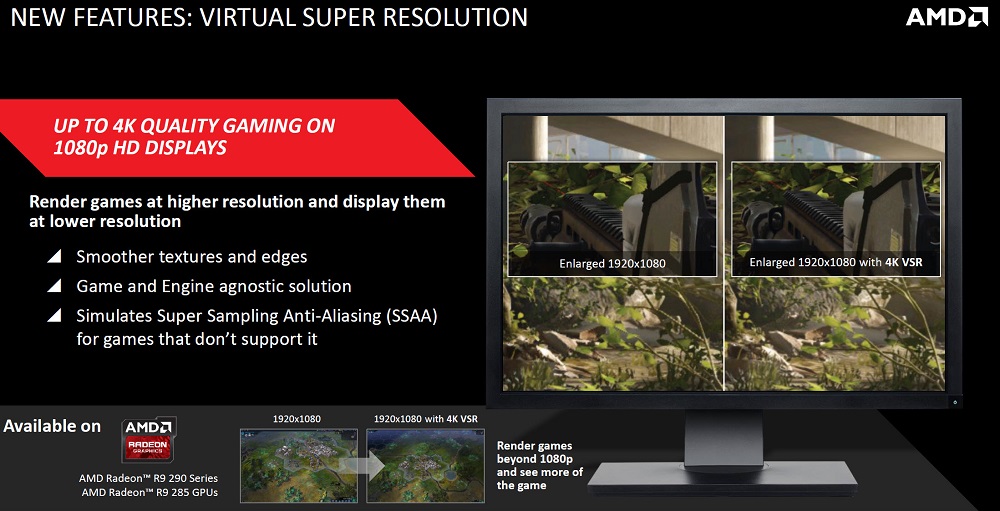
When Virtual Super Resolution is enabled, rendering is performed at settings that exceed the physical capabilities of the monitor. For example, if it supports Full HD at most, then the rendering is performed in 4K, and then the image is scaled to the real characteristics of the display. All this allows:
- Get image quality up to 4K on monitors that do not physically support this resolution.
- Eliminate the need to use anti-aliasing, which has a positive effect on performance and frame rate.
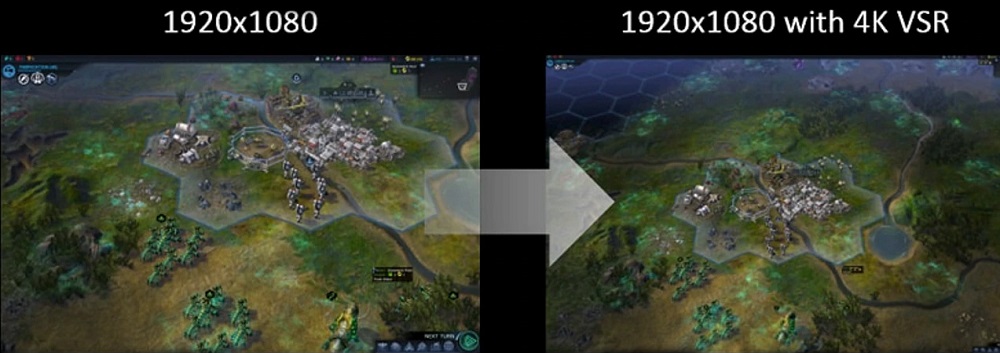
Nvidia, by the way, has a similar feature – DLSS. Accordingly, we can say that AMD virtual ultra-high resolution in games is an alternative option for image smoothing, but without a significant load on the GPU. The function will also help laptop owners, where it is not possible to replace the display matrix, to improve the quality of graphics rendering.

What are the advantages and disadvantages
Key advantages of the technology:
- The function provides higher picture quality. At the same time, the load on the graphics processor increases by only 15-25%.
- You can improve the rendering and get rid of the “ladders” when connecting a computer or laptop to a TV with a diagonal of 32 inches and above.
- The technology also supports high dynamic range (HDR) rendering. This completely eliminates the likelihood of graphic defects in dark images (even when playing video with the .h264 codec).
- You can save on buying a 4K monitor. After all, such displays are 1.5-2 times more expensive than those that work only in Full HD.
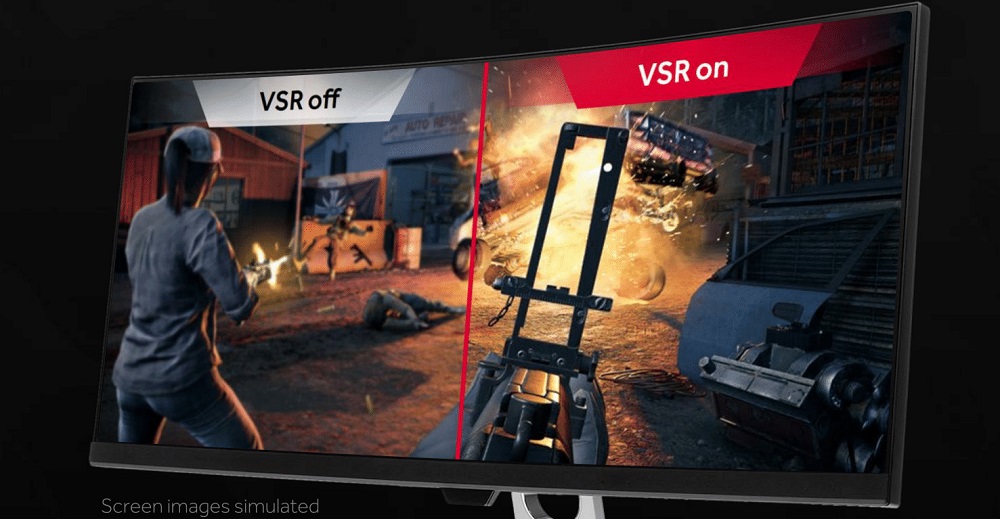
Among the disadvantages, the following can be mentioned:
- This function is only supported by the latest generation video cards.
- The technology can only be used in games that natively support it. That is, it also depends on the software developer.
- Sometimes the inclusion of AMD’s ultra-high resolution makes the picture on the screen unnecessarily blurry.
- When you enable higher resolution, the picture is scaled down. This can cause some of the labels or interface elements to become “unreadable”.
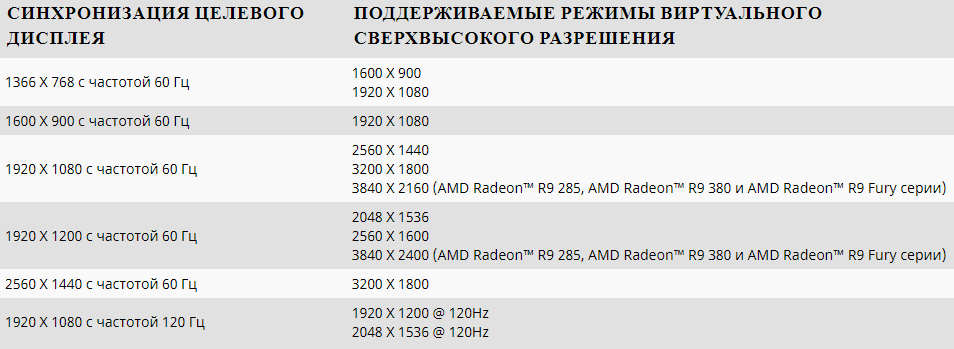
Whether or not to enable the function depends on the personal preferences of the player himself. Some people prefer this format of eliminating “ladders” more, others prefer traditional anti-aliasing. The final image quality also largely depends on the model of the monitor used and the response time of the matrix.
AMD Virtual Super Resolution Guidelines
Virtual Super Resolution can only be enabled on AMD Radeon HD7790 and newer graphics cards. GPUs integrated into the processor can also be used, but only in CPUs of the A6 7400K series or higher. Also, you must first install the latest up-to-date “Radeon Software Adrenalin” drivers. Then you will need:
- open “AMD Control Center”;
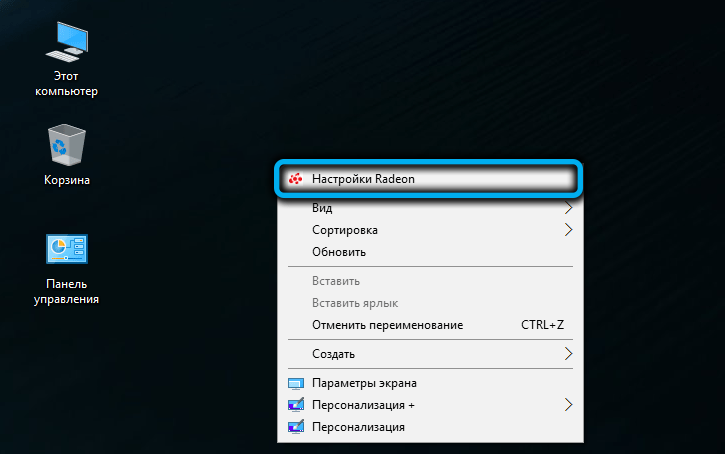
- go to the “Display” tab;

- enable the item “Virtual Super Resolution”.

After that, you can start the game and turn on rendering up to 4K in its settings, but only if such an opportunity was provided by the developer himself! As a rule, in applications until 2017-2018, this will not work. Please check with the game publisher directly for information.
Also, when using Virtual Super Resolution, it is recommended to enable the AMD Radeon Anti-Lag parameter in the driver settings. It reduces input lag, which will be useful when using wireless controllers, as enabling ultra high resolution has a negative impact on response time.

Total: Virtual Super Resolution is an alternative anti-aliasing option that can be used on AMD video cards. In new games, the function really makes the picture visually more attractive, while practically not reducing the number of frames per second. And the technology is presented only at the end of 2020, that is, in the next 5 years it will be actively improved.